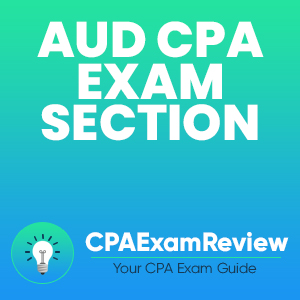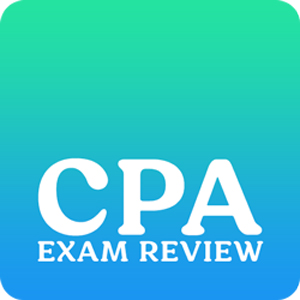 In the journey to becoming a Certified Public Accountant (CPA), understanding each section of the CPA exam is crucial.
In the journey to becoming a Certified Public Accountant (CPA), understanding each section of the CPA exam is crucial.
Among these, the Auditing and Attestation (AUD) section holds a unique place due to its focus on auditing principles, a cornerstone of the accounting profession.
In this article, we’ll check out the AUD CPA exam section including its purpose, key topics, structure, and how you can study for it in order to pass on your first try.
Let’s get started!
What is the AUD CPA Exam Section?
Contents
- What is the AUD CPA Exam Section?
- Key Topics Covered in the AUD Section
- Format and Structure of the AUD Exam
- Preparation Strategies for the AUD Section
- Challenges Unique to the AUD Section
- Importance of AUD in Accounting Careers
- Bottom Line
- Frequently Asked Questions
- What are the main content areas covered in the AUD section of the CPA exam?
- How long is the AUD section of the CPA exam, and what types of questions are included?
- Is the AUD section considered one of the more challenging parts of the CPA exam, and if so, why?
- What are some effective study strategies specifically for the AUD section of the CPA exam?
Auditing forms the backbone of financial integrity and accountability in business. The AUD section of the CPA exam tests a candidate’s ability to understand and apply auditing standards, making it a critical part of the certification process.
This section assesses the candidate’s knowledge of generally accepted auditing standards (GAAS), procedures, and ethics, which are essential for maintaining public trust in financial reporting.
Key Topics Covered in the AUD Section
The AUD section encompasses a comprehensive range of topics that reflect the core responsibilities of an auditor:
Ethics, Professional Responsibilities, and General Principles: This area covers the ethical and professional guidelines auditors must follow, including independence and objectivity.
Assessing Risk and Developing a Planned Response: Candidates must demonstrate an understanding of how to assess the risk of material misstatement in financial reports and plan an appropriate audit response.
Performing Further Procedures and Obtaining Evidence: This involves understanding the nature and extent of audit procedures needed to gather sufficient, appropriate evidence.
Forming Conclusions and Reporting: This includes the ability to form an opinion on the financial statements and understanding the different types of audit reports that can be issued.
These topics require not only a theoretical understanding of auditing standards but also the ability to apply them in various scenarios.
Format and Structure of the AUD Exam
The AUD section, like other parts of the CPA exam, is a 4-hour exam comprising multiple-choice questions (MCQs) and task-based simulations (TBS).
Testlet Structure: The AUD CPA Exam consists of five testlets. It includes two testlets of Multiple-Choice Questions (MCQs) and three testlets of Task-Based Simulations (TBSs). The MCQs account for 50% of your CPA Exam score, while the TBSs account for the remaining 50%.
MCQs: Each of the two MCQ testlets contains 36 questions. The first testlet typically has questions of moderate difficulty, and the difficulty level of the second testlet depends on your performance in the first one.
TBSs: The TBS testlets do not vary in difficulty based on your performance in the MCQ testlets. The third testlet contains 2 TBSs, while the fourth and fifth testlets contain 3 TBSs each.
Timing and Breaks: The AUD CPA Exam is 4 hours long. There is a 15-minute break between the third and fourth testlets that doesn’t count towards your exam time. You can take breaks after the first and second MCQ testlets, but these are counted in the exam time.
How many questions are on AUD?
The AUD (Auditing and Attestation) section of the CPA Exam contains a total of 72 Multiple-Choice Questions (MCQs) and 8 Task-Based Simulations (TBSs). These questions are distributed across the five testlets that make up the exam. Specifically:
- The first two testlets each contain 36 MCQs.
- The third testlet has 2 TBSs.
- The fourth and fifth testlets each have 3 TBSs.
Additionally, it’s important to note that within these questions, some are operational (counting towards your exam score) and others are pre-test (not counting towards your score but used for future exam development). In the AUD section, typically there are 60 operational MCQs and 12 pre-test MCQs, along with 7 operational TBSs and 1 pre-test TBS
Preparation Strategies for the AUD Section
Preparing for the AUD section demands a strategic approach:
Understand Auditing Standards: Begin with a solid understanding of GAAS and the AICPA’s Code of Professional Conduct. Familiarize yourself with the standards and ethical guidelines that govern the auditing profession.
Practice with Real-World Scenarios: Engage in task-based simulations that mimic real audit situations. This will help you apply theoretical knowledge to practical scenarios.
Use Quality Study Materials: Invest in reputable CPA review courses that offer comprehensive coverage of the AUD section. These materials often include practice questions, simulations, and detailed explanations.
Regular Review and Practice: Consistently review auditing concepts and practice MCQs and TBS. Repetition and practice are key to retaining information and honing your skills.
Time Management: Develop a strategy for managing your time during the exam. Practice working through questions and simulations efficiently to ensure you can complete all sections within the allotted time.
Challenges Unique to the AUD Section
The AUD section can be particularly challenging due to the complexity of audit scenarios and the application of auditing standards.
Candidates often struggle with the subjective nature of auditing judgments and the need to analyze scenarios from multiple angles. Understanding the intricacies of audit reports and opinions also poses a challenge for many.
Importance of AUD in Accounting Careers
The knowledge and skills tested in the AUD section are directly applicable to careers in accounting and auditing. Proficiency in AUD is essential for roles in public accounting, internal auditing, and financial compliance.
Mastery of auditing principles is not only crucial for passing the CPA exam but also forms the foundation for a successful career in ensuring the accuracy and reliability of financial information.
Bottom Line
The AUD section of the CPA exam is more than just a test of knowledge; it’s an assessment of a candidate’s ability to uphold the standards and ethics of the accounting profession. A thorough understanding of auditing principles and their practical application is essential for any aspiring CPA.
By focusing on the key areas of the AUD section, utilizing effective study strategies, and understanding its relevance in the accounting profession, candidates can approach this section with confidence.
Excelling in AUD not only brings you closer to achieving the CPA certification but also prepares you for a vital role in maintaining the integrity of financial reporting.
Frequently Asked Questions
What are the main content areas covered in the AUD section of the CPA exam?
The AUD (Auditing and Attestation) section of the CPA exam covers several key areas: Ethics, Professional Responsibilities, and General Principles; Assessing Risk and Developing a Planned Response; Performing Further Procedures and Obtaining Evidence; and Forming Conclusions and Reporting. These areas encompass a broad range of topics related to auditing standards, procedures, and ethical practices.
How long is the AUD section of the CPA exam, and what types of questions are included?
The AUD section of the CPA exam is 4 hours long. It includes multiple-choice questions (MCQs) that test your theoretical knowledge of auditing principles, and task-based simulations (TBS) that assess your ability to apply this knowledge in practical, scenario-based problems.
Is the AUD section considered one of the more challenging parts of the CPA exam, and if so, why?
Many candidates consider the AUD section to be one of the more challenging parts of the CPA exam. This is due to the need for a deep understanding of auditing standards and the application of these standards in varied and complex scenarios.
The section requires strong analytical skills and the ability to make judgments based on audit evidence.
What are some effective study strategies specifically for the AUD section of the CPA exam?
Effective study strategies for the AUD section include a thorough review of auditing standards and ethical guidelines, practicing with a variety of MCQs and TBS to get familiar with different scenarios, focusing on understanding the rationale behind auditing procedures, and developing time management skills for the exam.
Additionally, using reputable study materials that provide detailed explanations and real-world examples can be extremely beneficial.

